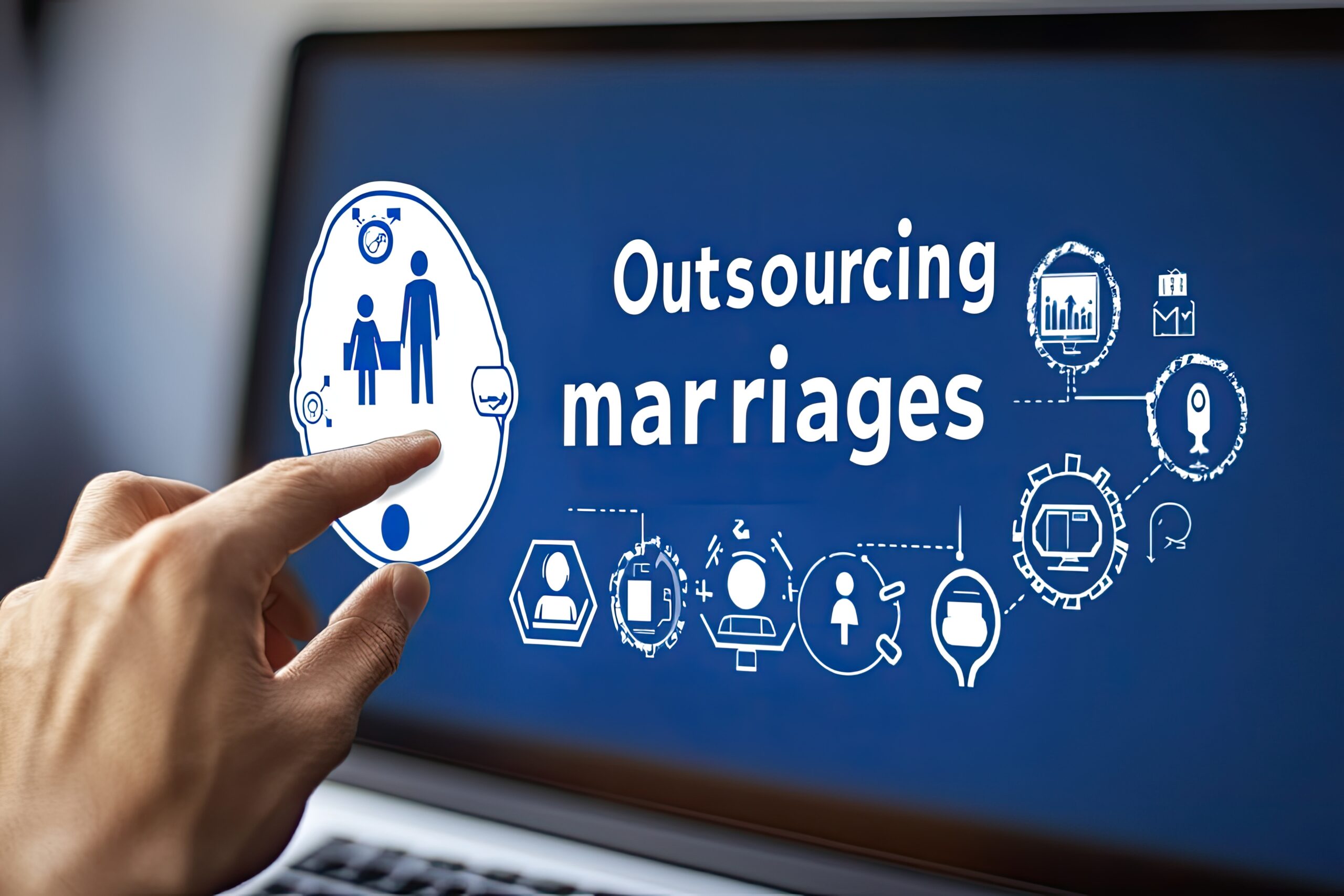 Back in 2016, I wrote my third book, “The Bacon System.” iPhones and social media were in their infancy. It was a quaint time when you could post to social media about yourself or your business, and the social systems and the algorithms were designed to get you as much engagement as possible.
Back in 2016, I wrote my third book, “The Bacon System.” iPhones and social media were in their infancy. It was a quaint time when you could post to social media about yourself or your business, and the social systems and the algorithms were designed to get you as much engagement as possible.
I was a big proponent of using social media to reach your perfect audience. But that is now a thing of the past. Facebook, Instagram, Google, and others all started down the path of pay-to-play. In other words, if you want to reach the target audience that buys from you, you need to define that avatar and then use advertising dollars to cut through the noise.
And it's a noisy social media world out there right now.
Just as Google started out as a free search engine, most social media platforms initially featured real people with real posts, increasing the likelihood of encountering something posted by someone you knew in real life — a connection you had made.
I did a little experiment while writing this. I opened Facebook on my mobile phone and scrolled down to the tenth post: three were ads, three were people you should follow, one was a group of reels to watch, and three were from people that I know in real life (irl). That means that two-thirds of my feed was “selling posts” (either ads, the platform, or people to engage with).
I was seeing only three irl people's posts, and those were the people with whom I engaged the most. Most of the notifications I get say that someone I know commented on my post. It's a ploy to get you to pay attention and keep scrolling the platform.
Fast forward to today. Their algorithms are now designed to keep people on their platform. How do they keep them there? By creating engagement by showing you things that will anger you and make you want to defend a point or start a fight. Yes, there are still pictures of babies, puppies, and bacon, but that is just to get you to scroll for more, only to be met by a post that raises your blood pressure.
With that being said, I think people often confuse social media with social networking. I also believe that when it comes to business-to-business marketing, LinkedIn is the only game in town when it comes to true social networking.
Let's start out by defining social networking.
Social

When I think about the word “social,” I think about an invitation-only gathering for a neighborhood, club, or even a paid meeting in a business setting. Introverts view the word “social” as a scary yet optimistic concept. During that activity, we all tend to search out people with similar lifestyles, interests, and values.
In the B2B context, “social” refers to any interaction or engagement that involves people, whether online or offline. This can encompass everything from casual conversations at industry events to participation in online forums or group discussions. Social behavior in business is foundational for building rapport, understanding others’ perspectives, and creating a sense of community both within and outside the organization.
Relevance for B2B Professionals
For B2B professionals, being “social” is not just about friendliness; it’s about fostering trust and credibility. Social interactions can occur in various settings:
- Industry conferences and trade shows
- Company-hosted events or webinars
- Informal gatherings or business lunches
- Online forums and community groups
These interactions lay the groundwork for deeper business relationships; however, they are not always goal-oriented or structured to achieve business outcomes on their own.
Networking
 Networking is a deliberate activity aimed at creating and nurturing professional relationships for mutual benefit. In the B2B world, networking is a strategic process that involves connecting with peers, industry leaders, potential partners, and clients to share knowledge, explore collaboration opportunities, and generate business leads.
Networking is a deliberate activity aimed at creating and nurturing professional relationships for mutual benefit. In the B2B world, networking is a strategic process that involves connecting with peers, industry leaders, potential partners, and clients to share knowledge, explore collaboration opportunities, and generate business leads.
Key Characteristics of B2B Networking
- Goal-Oriented: Networking is purposeful, focused on building relationships that can lead to tangible business outcomes such as partnerships, referrals, or new clients.
- Channels: It often takes place at industry events, conferences, seminars, and through introductions by mutual contacts. Increasingly, online platforms like LinkedIn have become vital networking tools.
- Best Practices: Effective networking involves active listening, mutual value exchange, consistent follow-up, and authenticity.
Social Networking
 Social networking combines the social aspect of relationship-building with the power of digital platforms. It refers to using internet-based social media sites to connect, communicate, and share content with other professionals, colleagues, or customers. For B2B professionals, social networking is most often associated with platforms like LinkedIn, Twitter (X), and industry-specific online communities.
Social networking combines the social aspect of relationship-building with the power of digital platforms. It refers to using internet-based social media sites to connect, communicate, and share content with other professionals, colleagues, or customers. For B2B professionals, social networking is most often associated with platforms like LinkedIn, Twitter (X), and industry-specific online communities.
Distinguishing Features
- Platform-Based: Social networking relies on digital tools to facilitate connections, making it possible to maintain and grow relationships across distances and time zones.
- Community Engagement: It enables professionals to join groups, participate in discussions, share thought leadership, and interact with a broader audience than traditional networking allows.
- Brand Building: Social networking is a powerful way to build a personal or company brand, establish authority, and increase visibility in the marketplace.
Social networking requires two things: people who have common interests and are aligned in a collaborative way, and a network where those people can be found and communicated with.
Best Practices for B2B Social Networking
 Let's focus on networks first. Social networks or social media like Facebook, Instagram, Twitter (X), are more entertainment than business. This is what people spend over 20 minutes a day on. It's a distraction, not necessarily a social network that fosters genuine, authentic relationships. LinkedIn is a platform that people only spend 20 minutes on per week. That means that you and their time are more valuable.
Let's focus on networks first. Social networks or social media like Facebook, Instagram, Twitter (X), are more entertainment than business. This is what people spend over 20 minutes a day on. It's a distraction, not necessarily a social network that fosters genuine, authentic relationships. LinkedIn is a platform that people only spend 20 minutes on per week. That means that you and their time are more valuable.
The social part is about going to that event and spending quality time with people who create value in your business, not just sales. This is what trips up a lot of users and diminishes the platform's overall value.
Focus on building authentic relationships, rather than just selling or engaging in self-promotion.
- Utilize platforms like LinkedIn for targeted, professional engagement—share insights, participate in discussions, and add value to your network.
- Combine in-person networking with online follow-up to strengthen and maintain connections.
- Maintain a consistent and professional online presence to reinforce your personal and company brand.
Rather than constantly being on the lookout for new opportunities, reach out to people you already know and ask quality questions about what they are up to and how you can help. Don't confuse that with the connect and pitch.
Connect and pitch has a formula: make a connection and pitch. Some will go for the jugular by asking for a 15-minute meeting about collaboration (a disguised volley of, “Could you be a good customer for me?”). Others will ask questions like “How are you doing? How is Business? What excites you this year?” After a few interactions, they will ask you to meet or review their pitch deck.
You are not collecting and dumping leads; you should be offering something of value in the form of thought leadership content and fostering interpersonal relationships.
 Closing Thought
Closing Thought
If you are a B2B business professional, understanding the distinctions between social, networking, and social networking is key to leveraging each for maximum business impact. It's not about the quantity of people you connect with; it's about quality. While social media like Facebook can seem like a game of The Sims or FarmVille, social networking (especially on LinkedIn) is more about using in-person skills in a digital world.
______________________________
Comment below and share your thoughts, ideas, or questions about business-to-business sales and marketing today! Do you have a sales or marketing communications strategy that works for you? What tips or techniques can you share that work for you and your business?
To learn more about this and other topics on B2b Sales & Marketing, visit our podcast website at The Bacon Podcast.








